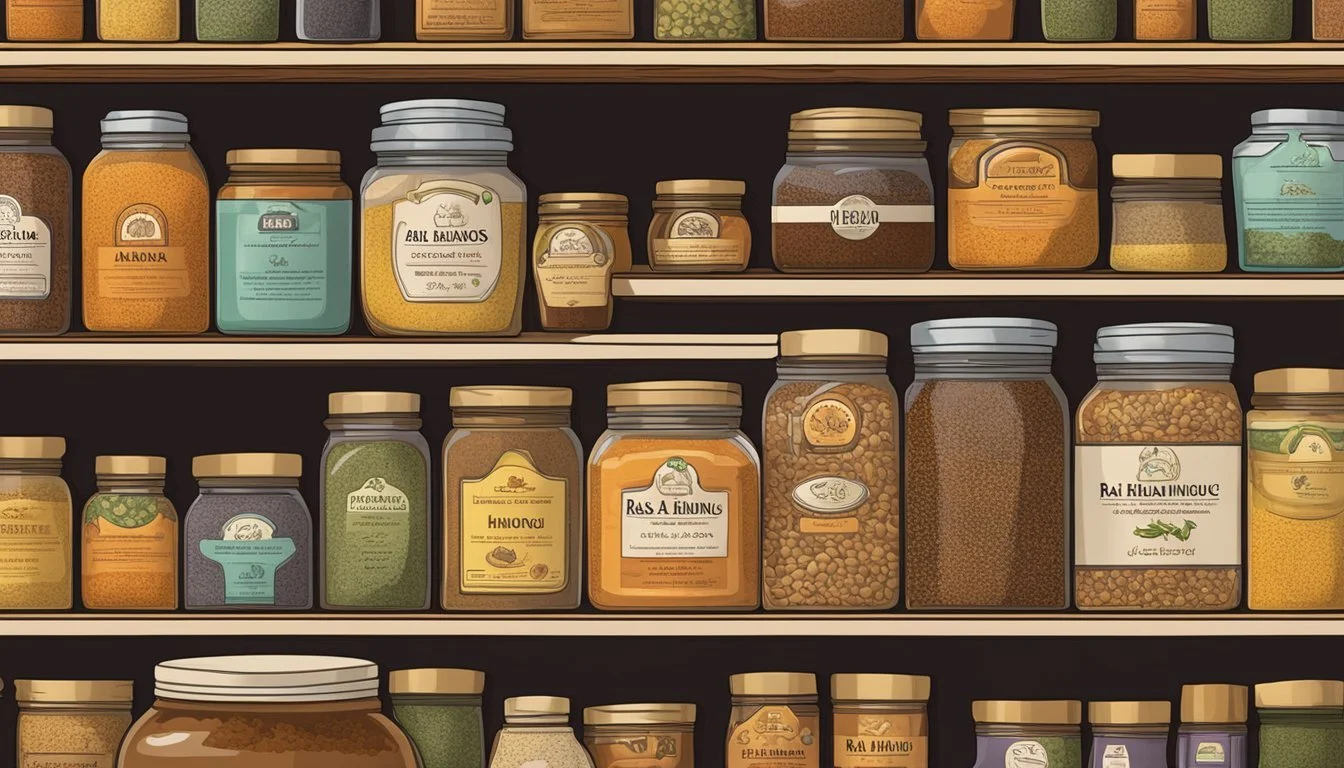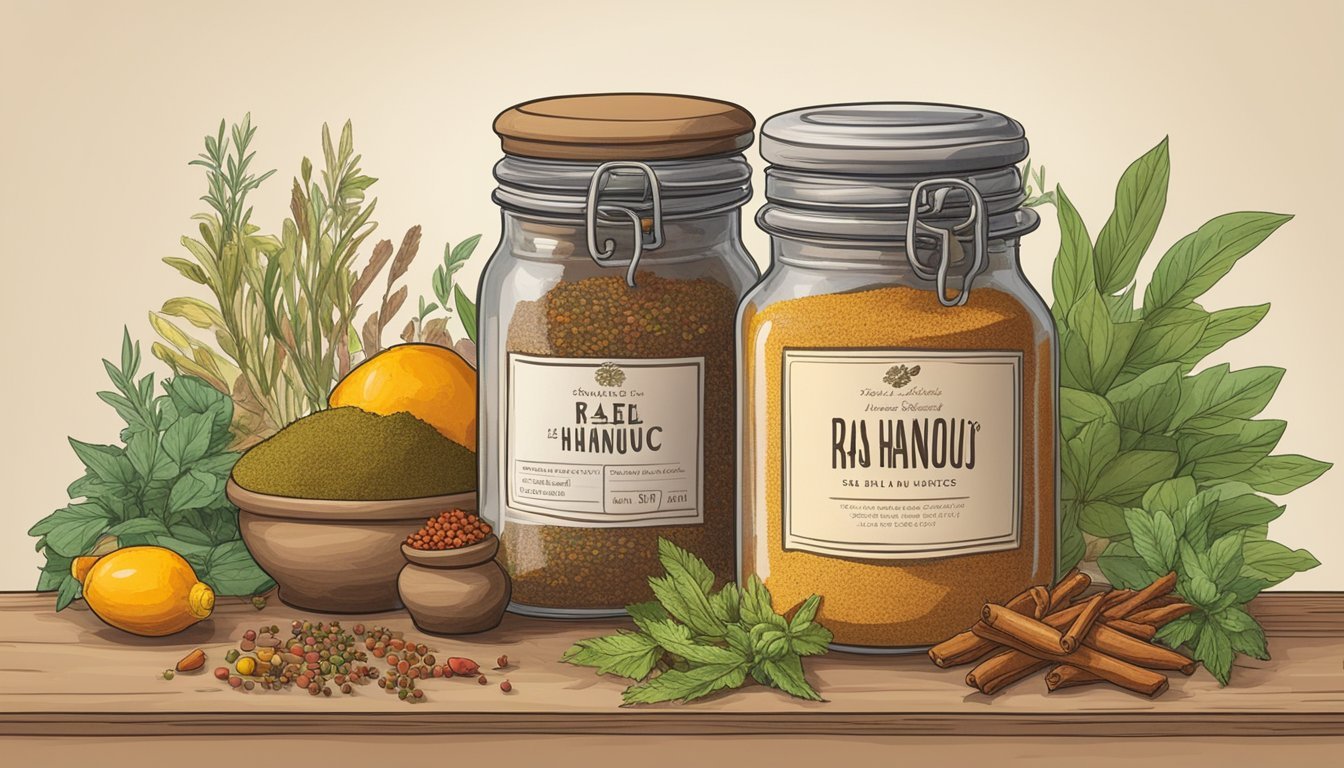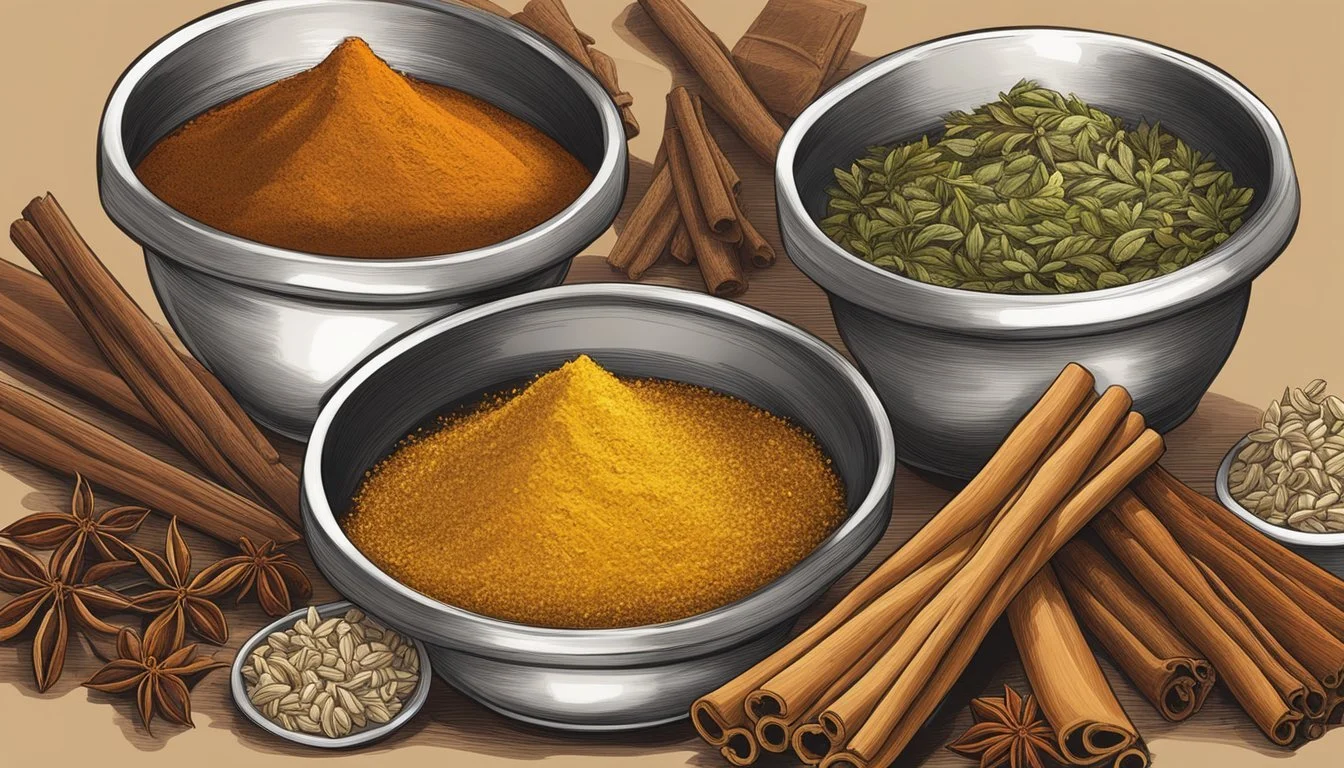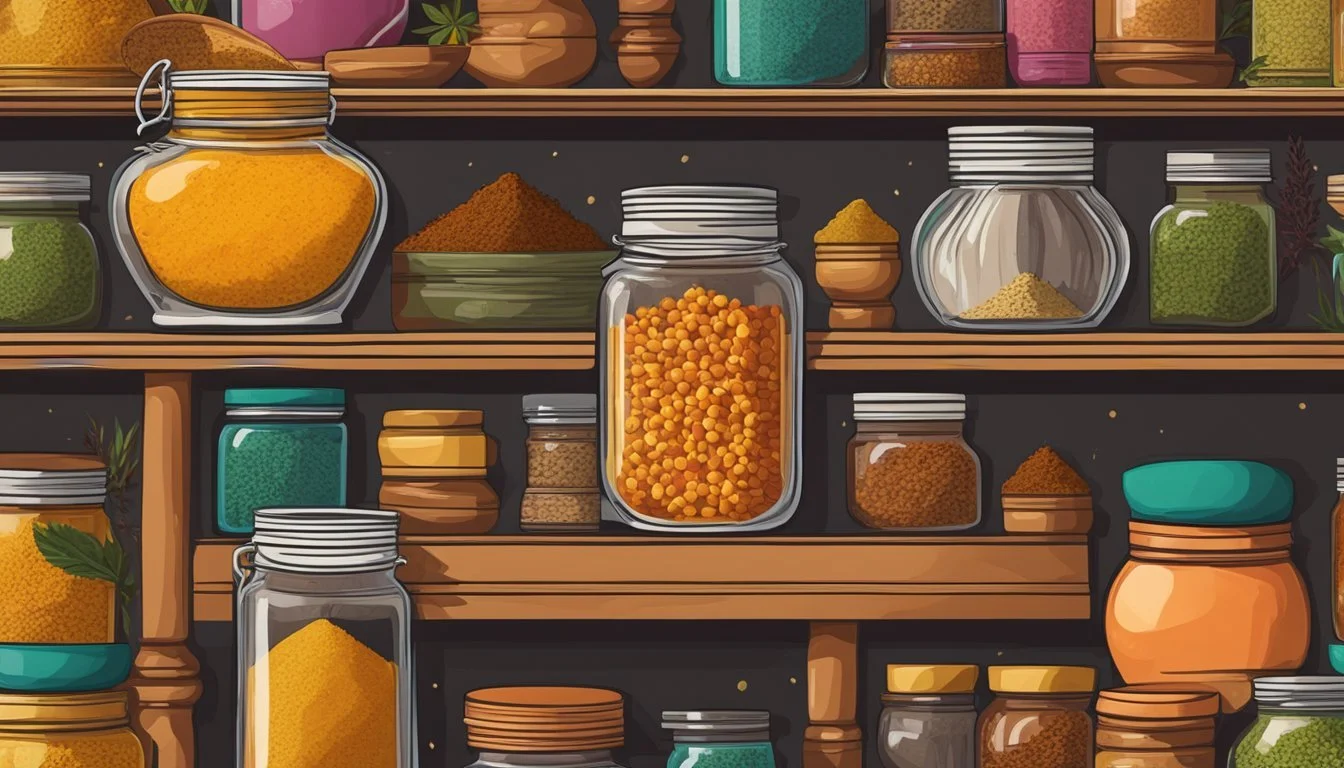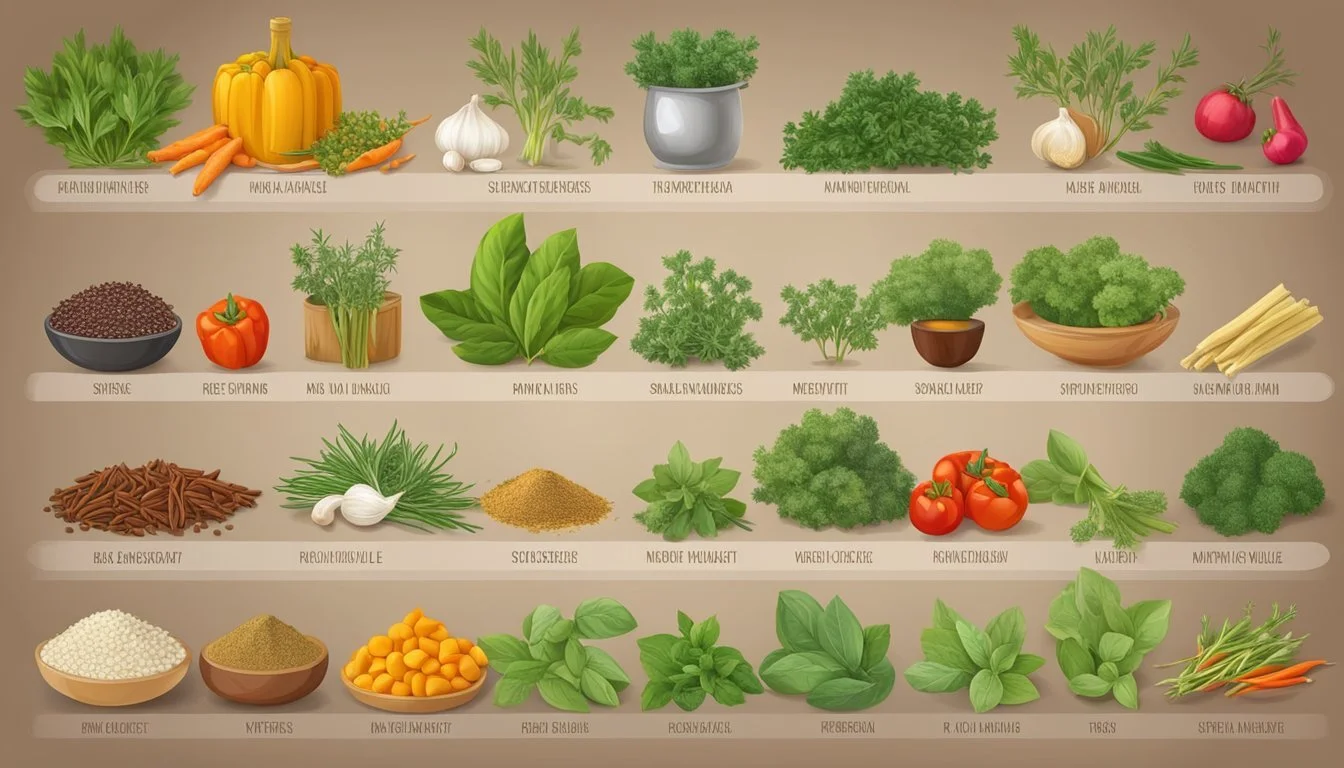Does Ras El Hanout Go Bad?
Shelf Life and Storage Tips
Spices don't last forever, and Ras el Hanout, the Moroccan spice blend, is no exception. Ras el Hanout, when stored correctly, retains its quality for an extended period. However, exposure to moisture, air, or light can degrade its flavor and aroma over time. Proper storage in an airtight container, preferably glass, helps maintain its freshness.
The blend is composed of various spices such as cumin, coriander, and cinnamon, each with their own shelf life. Over time, the potency of these spices diminishes, which can affect the overall flavor profile of the blend. This is especially important for those who value the unique and complex flavors that Ras el Hanout brings to dishes.
Purchasing Ras el Hanout from a reliable source ensures the spices are fresh when you buy them. Even though the blend is less perishable than fresh ingredients, it's advisable to use it within six months to a year for the best culinary experience. This makes knowing the signs of aging and proper storage methods essential for any spice enthusiast.
Understanding Ras El Hanout
Ras El Hanout is a versatile spice blend originating from North Africa. It is known for its complex, aromatic flavors, and can contain a multitude of spices, each adding its unique note to the mix.
Origins and Cultural Significance
Ras El Hanout means "top shelf" in Arabic, indicating its status as a prestigious spice mix in North African cuisine. Traditionally, spice merchants used this blend to showcase the best spices in their inventory. It reflects the rich culinary traditions of Morocco, Tunisia, and other regions, where the blend can vary significantly from one vendor or family to another.
This spice blend often symbolizes the essence of North African cuisine, combining aromatic spices to enhance a wide variety of dishes. It is deeply embedded in the cultural fabric, often used in festive meals and special occasions, showcasing the region’s opulent flavors.
Typical Ingredients and Flavor Profile
The ingredients in Ras El Hanout can vary greatly, often including coriander, cardamom, cumin, cinnamon, ginger, nutmeg, and allspice, among others. Some blends may also feature cayenne pepper for heat, rose petals for a floral touch, and turmeric for color and earthiness.
Its flavor profile is highly variable, typically featuring a sweet, earthy, warming aroma. The combination of spices leads to a complex taste that can be sweet and spicy, floral, or even slightly bitter, depending on the specific ingredients used. This makes Ras El Hanout a dynamic addition to both savory and sweet dishes, providing depth and an exotic flair.
Culinary Uses of Ras El Hanout
Ras el Hanout is a versatile spice blend used in a wide range of dishes. It enhances flavors in both traditional Moroccan recipes and international cuisine.
Traditional Moroccan Recipes
Ras el Hanout is a cornerstone in Moroccan cooking. It is integral to dishes like tagines and couscous.
Tagines, a slow-cooked stew, often feature lamb, chicken, or vegetables seasoned with Ras el Hanout. The blend infuses the dish with a complex, aromatic flavor profile.
In couscous, Ras el Hanout provides a unique depth. Whether paired with meat or vegetables, it elevates the dish, making it a staple in Moroccan cuisine.
Versatility in International Cuisine
Beyond Morocco, Ras el Hanout's uses are diverse. In Middle Eastern cuisine, it can season rice and stews.
Incorporating Ras el Hanout into roasted vegetables or as a marinade for meats adds a fragrant, spicy twist. It also enhances the flavor of various soups and stews, showcasing its adaptability in different culinary traditions.
Storing Ras El Hanout
Proper storage of ras el hanout ensures its flavor and quality remain intact. Important considerations include the right storage conditions and recognizing when the spice blend is no longer fresh.
Ideal Storage Conditions
Ras el hanout should be stored in an airtight container to keep moisture and air out. This prevents the degradation of the spice blend. Glass containers are preferred as they are non-reactive and do not absorb odors.
The spice blend should be kept in a cool, dark place away from direct heat and light. A spice rack inside a cabinet or pantry is ideal. Temperature fluctuations and exposure to light can cause loss of flavor and color in spices.
Rotate your spice jars occasionally to avoid prolonged exposure to heat sources like ovens or stoves. The aim is to maintain a stable environment for the spices.
Shelf Life and Signs of Spoilage
When stored correctly, ras el hanout can last between 6 months to a year. The intensity of the spices may reduce over time, but it remains usable if it still has a good aroma.
Signs of spoilage include musty or off smells, loss of vibrant color, and a dull taste. If the spice blend clumps together, it indicates moisture intrusion.
Regularly checking the condition of your spices can help ensure they remain fresh. Properly stored ras el hanout should retain its distinctive flavor profile and enhance dishes effectively.
Health Benefits and Nutritional Value
Ras el Hanout is a traditional North African spice blend known for its complexity and aromatic qualities. Its nutritional value can vary based on the specific blend of spices used.
Nutritional Composition:
Per 1 tablespoon (approximately 6 grams) of Ras el Hanout:
Calories: low
Fat: negligible
Carbohydrates: minimal
Iron: contributes to daily intake
Vitamin A: contains small amounts
Vitamin C: found in minute quantities
Calcium: present in trace amounts
Potassium: contributes to daily intake
Health Benefits:
Antioxidant Properties: The ingredients in Ras el Hanout, such as cumin and coriander, are rich in antioxidants which help protect the body from oxidative stress.
Anti-Inflammatory Effects: Spices like turmeric and ginger are known for their anti-inflammatory properties, potentially reducing inflammation.
Digestive Aid: Ingredients like cardamom and cloves can aid in digestion and improve gut health.
Mineral Content: Ras el Hanout provides trace amounts of essential minerals like iron, calcium, and potassium, contributing to overall health.
It's important to note that while Ras el Hanout offers some nutritional and health benefits, it is typically consumed in small quantities. Therefore, its impact on daily nutrient intake might be modest.
Creating Homemade Ras El Hanout
Creating homemade Ras El Hanout involves selecting quality spices and blending them properly to achieve a flavorful and aromatic spice mix. Attention to detail ensures the best results.
Selecting Quality Spices
Utilize whole spices for the most authentic and vibrant flavor. Spices like coriander, cumin, and cardamom, when freshly ground, release their essential oils, enhancing the overall richness of the blend.
Visit a trusted spice merchant to source fresh and high-quality spices. Pay attention to the color and aroma; fresh spices will typically have a more robust scent and vivid color.
Store your spices in airtight containers away from light and heat to maintain their potency and prevent them from going stale.
Blending Techniques
Grinding whole spices using a mortar and pestle or a spice grinder ensures a fresh and aromatic end product. Combine spices like cinnamon, nutmeg, and cloves with precision.
After grinding, thoroughly mix all the spices together in a bowl. To ensure even distribution, use a whisk or shake them in a sealed container.
For convenience, you can also purchase ground spices, although they may not offer the same intensity of flavor. Homemade blends allow for customization, so feel free to adjust to taste preferences. Store the final mixture in an airtight jar to keep the seasoning fresh for up to a year.
Comparison With Other Spice Blends
Ras el hanout distinguishes itself by containing the finest spices from North African regions. This section reviews its unique features and how it relates to other regional spice blends like baharat and garam masala.
Distinct Features of Ras El Hanout
Ras el hanout, meaning "top shelf" in Arabic, showcases the best spices available. This Moroccan spice blend includes ingredients like cumin, coriander, cinnamon, cloves, and ground ginger.
What makes it stand out is the sheer variety it can have, with some versions containing up to 90 different spices. Each blend is unique to the spice vendor, adding an element of exclusivity.
Similarities to Other Regional Mixes
Like ras el hanout, baharat and garam masala feature a mix of warm, aromatic spices. Baharat, a Middle Eastern blend, often includes black pepper, cardamom, cloves, and cinnamon. Garam masala, from India, consists of coriander, cumin, cardamom, cloves, and black pepper.
Both baharat and garam masala achieve a balance of flavors similar to ras el hanout. They all aim to create complex, layered tastes but are tailored to their culinary traditions. For instance, garam masala focuses more on heat, while baharat is a bit more aromatic.
Exploring the Spice Trade
The spice trade has a rich history spanning centuries. Originally, spices were highly prized commodities, often worth more than their weight in gold. Merchants traveled vast distances, navigating treacherous routes to bring these coveted flavors to faraway lands.
North Africa played a significant role in the spice trade. The region's strategic location made it a bustling hub for commerce. Spices like cumin, coriander, and cinnamon passed through Arabic-speaking merchants, who controlled key trade routes.
Merchants were adept at blending and selling spices, using their knowledge to create unique mixtures. Ras el Hanout, meaning "head of the shop" in Arabic, is an example of such expertise. This blend, often specific to each spice vendor, includes the finest and most flavorful spices available.
Popular Spices in the Trade:
Cinnamon
Cumin
Coriander
Nutmeg
Cloves
The demand for spices was driven by their ability to enhance savory dishes. In many cultures, spices were not just flavorings but also held medicinal and preservative properties. This demand created a lucrative and competitive market.
The influence of the spice trade is evident in the rich culinary traditions of regions like North Africa. Here, spices are integral to the cuisine, creating complex and distinctive flavor profiles. Ras el Hanout is a testament to this tradition, a blend that captures the essence of the region's spice mastery.

